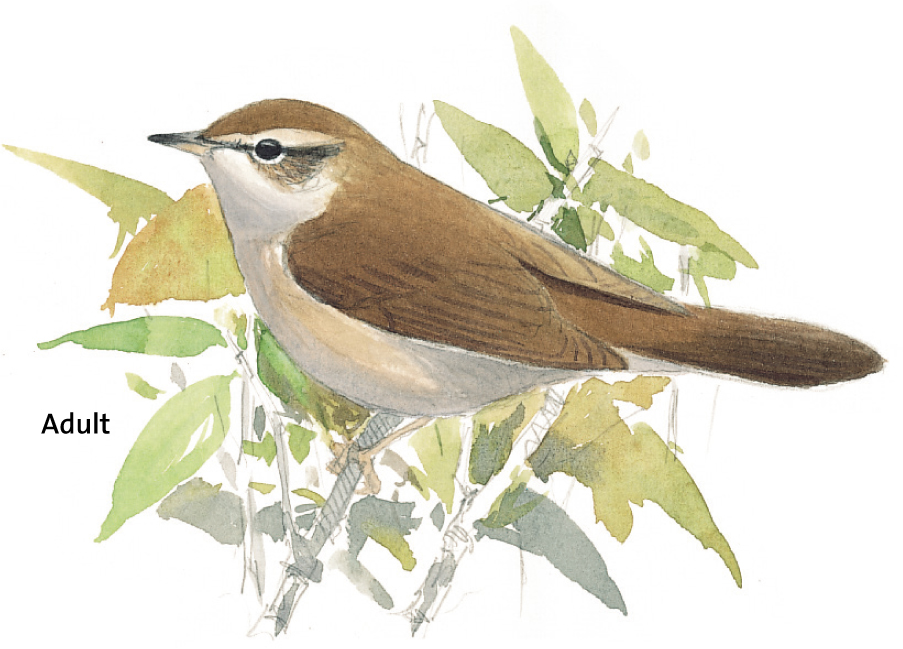
Cetti’s Warbler
Cettia cetti

SIZE AND DESCRIPTION
14cm. Sturdy dark warbler with very short wings and long, heavy, round-ended tail. Plumage warm red-brown, mid-greyish below, dark eyestripe and pale supercilium. Legs dull pinkish.
VOICE
Song an abrupt burst of powerful, fluty notes, heard all year round.
HABITAT
Found across most of southern Europe, recent colonist of southern Britain. Resident. Occurs in damp and well-vegetated areas including reedbed edges and overgrown ditches.
FOOD AND HABITS
Feeds on all manner of small insects and other invertebrates. Extremely skulking and difficult to observe, slipping mouse-like through thick, low vegetation. As a non-migrating insectivore, can suffer population crashes in very severe winters.
Grasshopper Warbler
Locustella naevia
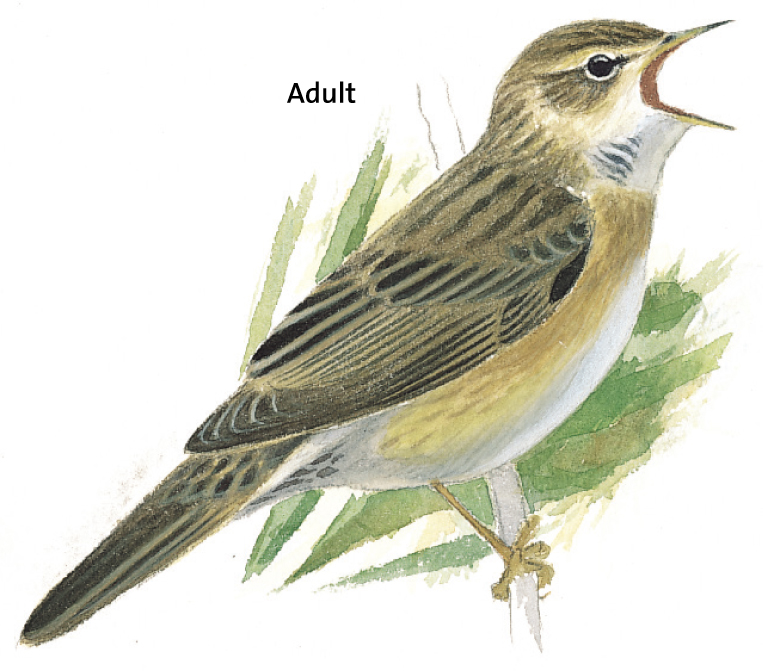
SIZE AND DESCRIPTION
12.5cm. Small, rather drab warbler with long, round-ended tail. Plumage dull grey-brown, paler below, throat whitish. Darker streaking on crown, back and on the very elongated undertail-coverts.
VOICE
Song a continuous extremely fast dry trill, sounding like an angler’s reel. Call a crisp ‘stit’.
HABITAT
Summer visitor to most of Europe, widespread but rather uncommon in much of Britain. Long weedy grass and marshland edges.
FOOD AND HABITS
Insect-eater. Usually difficult to see, its strange song hard to pin down, and often sings from within deep cover, but some individuals more showy. Moves low and mouse-like through vegetation.
Sedge Warbler
Acrocephalus schoenobaenus

SIZE AND DESCRIPTION
13cm. Olive-brown streaked-backed warbler with a rounded tail and rufous-coloured rump. Conspicuous creamy-white stripe above the eye. Sexes look similar.
VOICE
Loud, jumbly and scratchy song.
HABITAT
Waterside vegetation near reed beds, rivers and lakes, and lowland marshes; also dry scrubby areas. Summer visitor to Britain, migrating to Africa in late summer.
FOOD AND HABITS
Mainly eats insects; takes berries in autumn. Nests in rank vegetation.
Reed Warbler
Acrocephalus scirpaceus
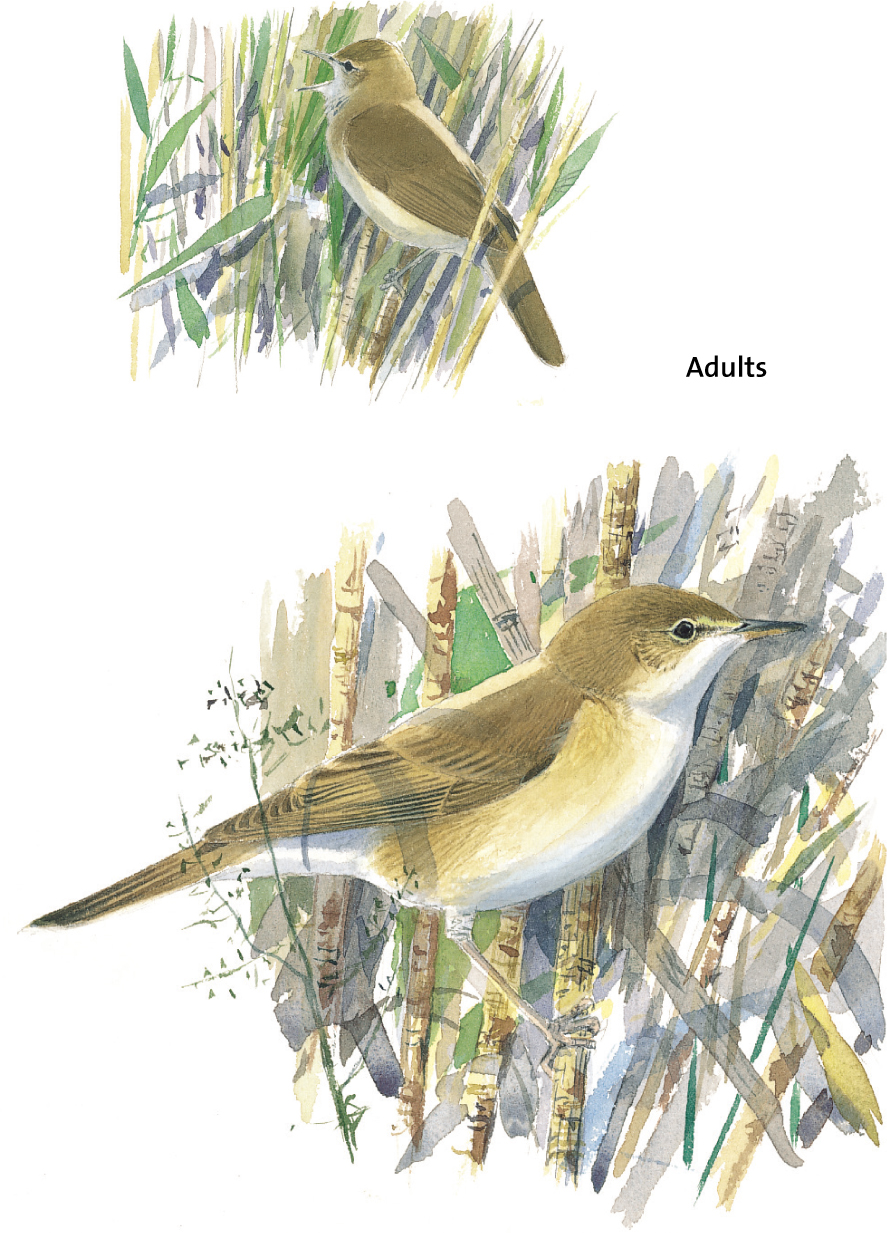
SIZE AND DESCRIPTION
13cm. Small olive-brown warbler with slight rufous tinge to its upperparts. Buff-coloured below. Rounded tail. Sexes look similar.
VOICE
Monotonous churring song.
HABITAT
Mainly reed beds. Summer visitor to Britain.
FOOD AND HABITS
Eats water insects. In autumn feeds on berries, which provide energy for its long migratory flight. Builds a nest of woven grasses slung between reed stems. Common host to Cuckoo.
Common Whitethroat
Sylvia communis
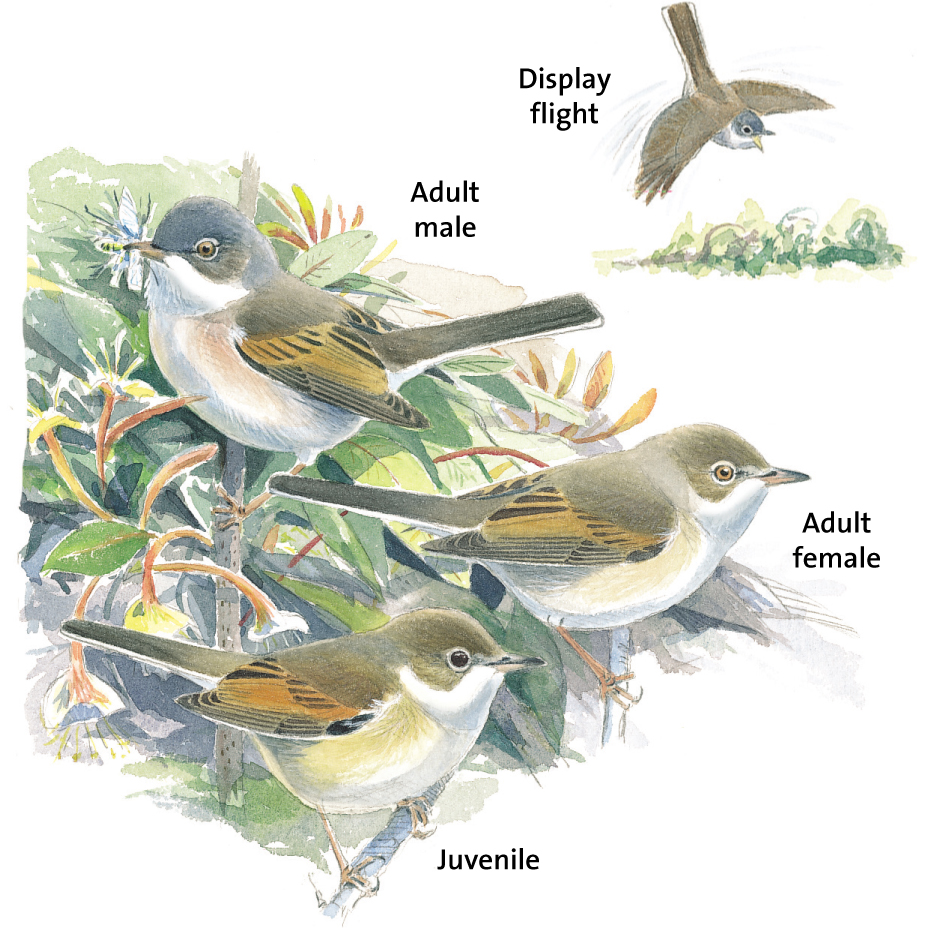
SIZE AND DESCRIPTION
14cm. Male has a grey head, a bright white throat, brown upperparts and pale underparts. Female has a brown head. Tail long and slim.
VOICE
Call a sharp ‘tacc, tacc’. Song a rapid warble.
HABITAT
Open woodland, gardens, hedgerows and scrub. Summer visitor to Britain.
FOOD AND HABITS
Eats mainly insects, and some fruits and berries in autumn. Nests in brambles and low bushes not far from the ground.
Common Chiffchaff
Phylloscopus collybita

SIZE AND DESCRIPTION
11cm. Small neat bird with a fine bill and thin legs. Very similar to Willow Warbler. Primaries shorter. Legs usually dark and bill even finer. Stripe above the eye less distinct, while darkish patch beneath the eye emphasizes white eyering.
VOICE
Call a soft ‘hueet’. Song a distinctively slow ‘chiff-chaff-chiff-chaff’.
HABITAT
Open deciduous woodland with some scrub. A few overwinter, often in sheltered coastal areas.
FOOD AND HABITS
Similar to Willow Warbler.
Willow Warbler
Phylloscopus trochilus

SIZE AND DESCRIPTION
11.5cm. Head, back and tail generally brownish-green; throat and eyebrow yellowish; legs usually pale brown. Primary feathers project beyond tertials.
VOICE
Call a soft ‘huitt’ similar to Common Chiffchaff’s. Song rather sad.
HABITAT
Summer visitor to northern Europe, common and widespread in Britain, especially the north. Breeds in mainly deciduous woodland, on migration visits coastal copses and scrub.
FOOD AND HABITS
Feeds on insects found among leaves. Nest a grassy dome on or near the ground.
Yellow-browed Warbler
Phylloscopus inornatus
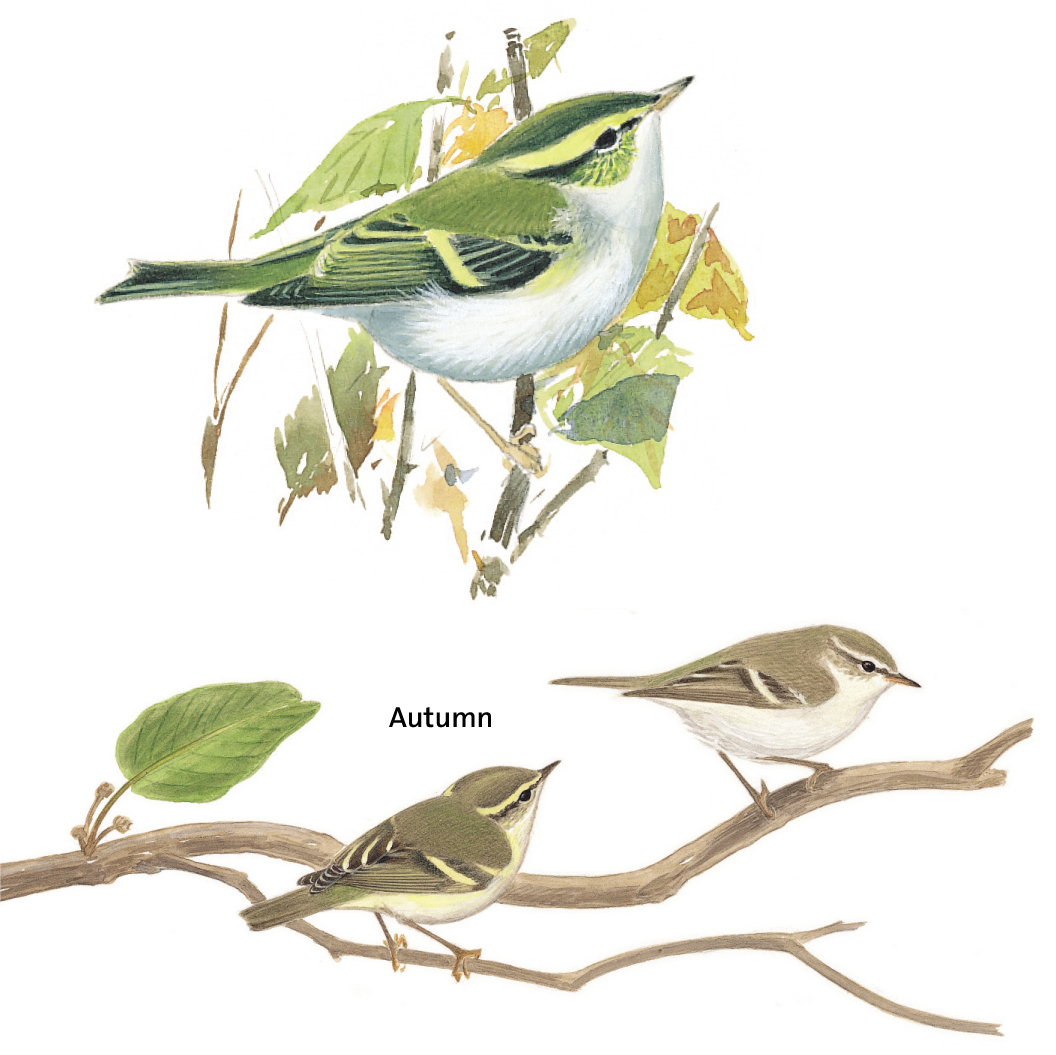
SIZE AND DESCRIPTION
10cm. Tiny, Goldcrest-like warbler with green and yellow plumage. Has bold face pattern with green crown, yellow supercilium and blackish eyestripe, wings have double yellow wingbar, rest of upperside bright moss-green, underside whitish.
VOICE
Disyllabic high-pitched ‘soo-eet’.
HABITAT
Breeds in Siberia, occurs in Britain as a vagrant or rare passage migrant. Most appear in mid-autumn on the east coast, often in small stands of sycamore trees (these keep their leaves longer into autumn and therefore hold more insect prey).
FOOD AND HABITS
Searches leaves for tiny insects, often hovers, extremely active. May join tit flocks. Occasionally overwinters.